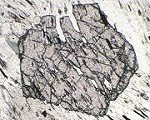Practical Aspects of Mineral Thermobarometry
Reciprocal solutions
In multi-site solid solutions, it may be necessary to consider non-ideal interactions between cations in different sites as well as, or rather than, interactions in the same site. This is entirely understandable in terms of mineral structure: for any cation site of interest, its nearest cation neighbours are quite likely to sit in a crystallographically different site. Such relations are called reciprocal, and they are described in Spear, chapter 7, pp. 205-213. An activity model for disordered sodic pyroxenes involving reciprocal solution parameters is given in Holland (1990) Contrib Min Pet 105, 446-453.
[ More here in due course ]
This page last modified 12 October 2004
